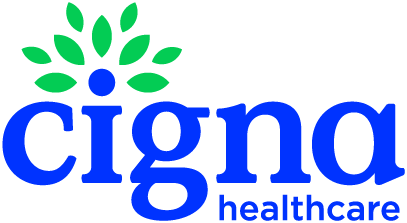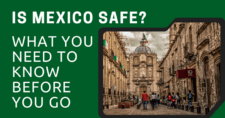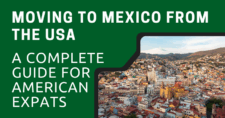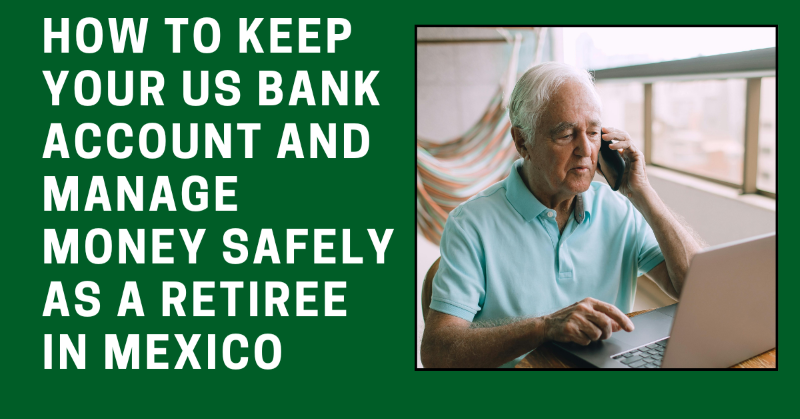
Learn how to keep your US bank account, transfer funds, and manage money safely while living or retiring in Mexico.
I often wonder where the best place is to keep my finances that I rely on in Mexico. Every retiree or expat in Mexico eventually has to deal with their finances. What retirees living in Mexico are doing to secure their finances differs.
Most of us still have to pay rent, buy groceries, pay for medical expenses, and other necessary items most of the time.
The question for retirees like myself is how to keep their money safe and accessible. We still need to pay many things in cash, especially when you retire in a small town in Mexico like me. We also need to receive pensions regularly that transfer from our home country, which is the US in my case.
I’ve come up with some helpful advice that can help people in both urban areas and small towns without prohibiting you from enjoying the best possible choices to keep your money safe and accessible.
This article will take approximately 22 minutes to read. Don't have the time right now? No worries. Email the ad-free version of the article to yourself and read it later!
Disclaimer: This article may include links to products or services offered by ExpatDen's partners, which give us commissions when you click on them. Although this may influence how they appear in the text, we only recommend solutions that we would use in your situation. Read more in our Advertising Disclosure.
Contents
- Key Takeaways
- What You Need To Do To Keep Your Home Country Bank Account
- Having a Bank Account in Mexico
- Pros and Cons: US Bank versus Mexican Bank
- Accessing Your Money
- Problems with Lost or Stolen Credit/Debit Cards
- Using Your US Brokerage or Retirement Account
- Is Coppel a Real Bank?
- Tax Implications
- Helpful Finance Hacks for Retirees in Mexico
- Now On to You
Key Takeaways
- Even while retiring in Mexico, you still need to keep your US bank account active to maintain insured savings, fraud protection, and flexible access to funds while living in Mexico.
- You’ll need a valid US address and phone number to keep most US accounts open. Virtual mailboxes and roaming phone plans can help.
- You should set your accounts to paperless billing to avoid mail issues and protect sensitive financial information.
- It’s still important to open a local Mexican bank account for daily expenses, bill payments, and cash access. Major banks include Banamex, Santander, Banco Azteca, and BanCoppel.
- You can use money transfer services like MoneyGram, Wise, or Remitly to move funds from the US to Mexico safely and compare fees and exchange rates before sending.
- Don’t rely solely on ATMs. Fees can be high, and some machines are targets for card skimming. Consider cash pick-up services as an alternative.
- Maintain backup accounts (like BanCoppel or another local option) for emergencies or when your main card is lost or stolen.
- Understand your tax obligations in both countries; the US–Mexico Tax Treaty prevents double taxation, but you must file in both jurisdictions.
What You Need To Do To Keep Your Home Country Bank Account
The first question you need to ask yourself is where is my money coming from and where do I want to keep my money. You may be a retiree collecting a government pension, such as Social Security or a state pension. Other retirees are living on their 401(K)s, IRAs, or savings accounts.
The best answer to this question is to keep an active bank account. If you’re like me, an American, I understand it’s not easy for everyone to keep an active US bank account, but there are definite benefits. Your money is insured, there are limits on fraud liability, and you can access your money in a variety of ways while you’re living in Mexico.
There are several items you’ll need to satisfy to keep an active bank account, including a United States address and telephone number.
Here are the best tips I’ve learned over the years. They are mainly for Americans.
US Address
Bad news for Americans. After you move out of the US, you still need to find a way to keep your US address. Without it, there’s a chance that an American bank may close your account.
In the past, I’ve used my rental property address (my former residence) and family members, including children, siblings, and parents (when they were alive). Each time, it posed different problems, ranging from similar names to junk mail to important notices that needed to be addressed.
The easiest way to get around most of the problems with excessive mail to whatever location you’re able to secure is to go paperless. Set your bank, credit card, and financial statement accounts to paperless.
Once your account is set to paperless, you no longer receive monthly statements in the mail; you simply receive an email notifying you that your statement is ready to be viewed online. This prevents people from going through your personal financial information and avoids touchy situations with family or friends.
Virtual Mailbox Services
Other retirees are happy about virtual mailbox services, but remember, each location is different, and you’re still dependent on another individual or a stranger to access your mail. You’ll need to fill out Form 1583 and submit a change of address card for the United States Postal Service.
Here are a few companies that have high customer satisfaction ratings from TrustPilot, the Better Business Bureau, and Google Reviews:
iPostal1 — offers a wide variety of real street addresses, and you’re able to customize your mail forwarding options. Prices range from $9.99 to $39.99 per month.
Anytime Mailbox — delivers unique services catered to your specific needs. Their plans start at $5.99 per month with additional costs per letter.
PostScan Mail — another service with real US addresses in desirable cities throughout the United States. Plans start at $10.00 with additional costs for scanning envelopes, opening and scanning letters, and envelope storage per day.
US Global Mail — the company is a favorite with expats and digital nomads. They offer real addresses in several areas in the United States. Plans start at $19.95 per month but include unlimited envelope scans, 30-day mail storage, 25 scanned pages, and same-day mail scanning.
US Telephone Number
Your telephone is another important piece of the equation in keeping an active United States bank account. Most US banks, credit cards, and financial institutions will not enter a foreign telephone number as your main contact point. The institution may collect your foreign telephone number as a secondary contact number for your account, but not as your primary point of contact.
Keeping a United States telephone number active for retirees is an added expense that’s not easy to get around. Be prepared to pay. Monthly plans with AT&T, Verizon, and T-Mobile are not cheap. Expect to pay from USD $55 to $100 per month for whichever carrier you decide to use. Currently, all three carriers have a plan that will work in Mexico starting at USD $55.00 per month.
Also, be aware that some plans will only work outside the United States for six months. AT&T is the carrier that operates outright in Mexico with its own cellphone towers. Many retirees have had problems with Verizon and T-Mobile after six months. I have used T-Mobile in Mexico continuously for two and a half years now without disruption. I pay USD $57.00 per month.
Two-Step Verification
Most of your financial institutions will want to use a two-step verification system where they text you a six-digit code.
There are problems with the two-step verification system. For instance, I had my US telephone stolen while living in Mexico. I used my Mexican telephone to contact my financial institutions about my stolen phone. I asked them to set up a different way for two-step verification. In most cases, the companies worked with me on my problem, and now I have a choice between receiving a text message or an email to a specified address associated with the account.
Other individuals have used services such as Receive-SMSS Online, which provide people with a free telephone number to receive text messages for two-step verification. The service is open to whoever is using the system, and everyone on the system can view your message with the six-digit code.
But that does not solve the problem of the financial institution wanting a United States telephone number attached to your account. You’ll need to plan accordingly with a reputable US-based carrier that serves both the United States and Mexico. Fortunately, most telephone plans originating in the United States offer free voice calls and text messages between the two countries.
Having a Bank Account in Mexico
Recently, three financial institutions in Mexico—Intercam Bank, CIBanco, and Vector—were sanctioned by the United States Treasury Department for money laundering. The sanctions froze the assets of retirees in Mexico who had accounts in these three institutions. The sanctions also prohibited deposits from the United States into these financial institutions.
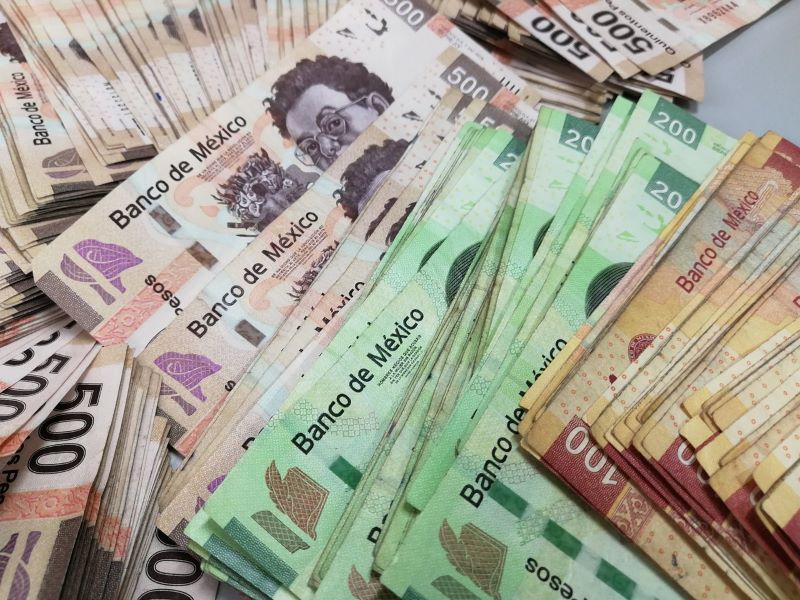
Although assets were frozen at first, retirees and expats have been able to withdraw their money in some fashion. Direct deposits from the United States are still not possible, but both governments are working on solving the problem.
In general, your money is safe in a Mexican bank. Each person’s account is insured by the Mexican government and the Instituto para la Protección al Ahorro Bancario (IPAB), which is similar to the FDIC in the United States. The amount fluctuates based on exchange rates and is currently around USD $160,000 per account.
If you’re interested in opening a bank account in Mexico, check here for proper directions and documents needed.
Banking in an Urban Area in Mexico – Lots of Choices
I have two formal Mexican bank accounts. My first bank account with Banamex I opened many years ago when I lived in an urban area with a high concentration of expats and tourists. Each time I went to the bank, I could find an employee who spoke English, which helped with the language barrier.
While living in Cozumel and Playa del Carmen, I used the account for everything—from transferring money from my United States bank to paying rent to my landlord and covering my electricity and water bills.
There were some things I didn’t like about the bank account. Because it was a savings account, they required me to keep a minimum balance or pay a service fee. Another thing I didn’t like was the limitation on withdrawals each month. Since I still predominantly used cash for groceries and daily expenses, I tended to make larger withdrawals.
One thing I like about the savings account is that it earns interest monthly. When I left for a year or two, I was surprised that the account was paying close to eight percent interest. When I moved to a rural area in Mexico, I decided to keep a small balance in the account. Today, I only use the account as a savings account for emergency funds.
Lack of Banks in Smaller Towns in Mexico
After moving to a rural area, I was shocked that banks didn’t exist in every town. The town I’m currently living in only has one formal bank, Banco Azteca. I can take a 30-minute bus ride to a neighboring town, where four banks are available: Banamex, Santander, Banco Azteca, and HSBC.
I opted to open a simple account at Banco Azteca. The account doesn’t require a minimum balance, and it does not pay interest on deposited money.
When I opened the account, there was a language barrier, but I took a bilingual friend, and they helped the process go quickly. I also received a new debit card that day at the bank.
Interestingly enough, many banks don’t put your name on a debit card. You can request a card with your name, but I’m unsure how long the delivery time might be.
If you’re interested in opening a bank account in Mexico, check here for proper directions and documents needed.
Biometrics in Mexican Banks
Financial institutions in Mexico rely heavily on biometrics, especially fingerprints. For instance, when I withdraw money from Banco Azteca, I’m required to insert my debit card into a terminal and input my PIN. Then, I place my right thumb over a scanner to verify my identity. Conversely, if I forget my debit card, I can show my resident card and account number, scan my thumb, and it’s done.
Each Mexican bank is a little different, but you can count on getting your thumb scanned when you want to withdraw money from your account.
Pros and Cons: US Bank versus Mexican Bank
Pros
- Your money is insured in both Mexican and US bank accounts.
- A Mexican savings account pays a higher interest rate than most US banks.
- Online banking is available for both countries’ banking options.
- Fraud liability insurance is better with a US bank.
- Accessing your money is easier with a US bank.
- You can pay your electricity and water bills with a Mexican bank account.
Cons
- Primary contact information for a US bank can be difficult. You’ll need a permanent address and a US telephone number, which will cost you money.
- Long lines or waiting times, along with language barriers, exist in most Mexican banks.
- Limited number of withdrawals per month with Mexican banks (depending on your specific account).
- You’ll still need to transfer money to your Mexican bank unless you direct deposit your pension.
- Varying exchange rates exist between Mexican banks.
Accessing Your Money
Some retirees in Mexico have chosen to have their pension check deposited directly into a Mexican bank account. I don’t recommend this because of the changing political climate in both countries.
There are many ways a retiree can access their money in Mexico, including banks, ATMs, wire transfers (from a US bank to a Mexican bank), or a simple cash pick-up at a specified location.
Except for an ATM withdrawal, you will need to transfer your money to somewhere in Mexico before accessing it. There are plenty of services to help retirees transfer money from their US bank accounts to anywhere in Mexico.
Money Transfer
My preferred service at the moment is MoneyGram. There is one simple fee, the exchange rate is generally good, and their reliability is fantastic. I currently pay USD $1.99 per transaction to transfer money on MoneyGram from my US bank debit card to my Banco Azteca debit card.
I have used many services over the years, including Western Union, Wise, Remitly, and XOOM.
I preferred XOOM for many years until they implemented a sliding scale on the exchange rate based on the amount of money transferred. Not everyone is comfortable sending large amounts of money at one time. According to many expats and retirees, Wise can be hit or miss. Personally, I stick with what works for me, and you should do the same.
To learn about the cheapest ways to send money to Mexico, click here.
ATM Withdrawals
I prefer not to use ATMs to access my money in Mexico. There are fees from my US bank for each ATM transaction and from the Mexican bank’s ATM terminal. As stated earlier, some banks and brokerage firms will reimburse your ATM fees, but you need to check first.
ATM terminal fees associated with a Mexican bank range from MXN $20 to $150 per transaction. There are no ATMs with free withdrawals. During your transaction, the terminal will display an exchange rate that favors the Mexican bank; always decline this conversion rate. You’ll get a better rate from your US bank.
I have found that most US banks charge fees between USD $3.00 and $5.00 per transaction for using an out-of-network ATM.
Here’s an article to help you learn more about ATM in Mexico.
Cash Pick-up
Before I had a Mexican bank account, I used a simple cash pick-up method. I would send myself money through a service such as MoneyGram, Western Union, Xoom, Wise, or Remitly. I then went to the location where I sent my money with my passport and password (usually a series of numbers) and collected the funds.
At first, I didn’t know I had this option as a foreigner or retiree in Mexico. I found this out the hard way when an ATM kept my debit card. I was frustrated and lost. I felt I had no way of getting money without my debit card from a US bank account.
I talked with a friend, and they explained how they received money from family members in Mexico who were working abroad. My problem was solved.
Safety and Convenience of Cash Pick-up
Safety is also a concern for retirees. Whenever you bank, use an ATM, or pick up money, check your surroundings. Sometimes it’s best to come back if you don’t feel comfortable or bring a friend along with you.
Another advantage of cash pick-up is avoiding ATMs that are known to be targeted for skimming card numbers. Unscrupulous individuals around the world widely employ this practice, and Mexico is no exception.
Thieves target ATMs in areas with large expat, retiree, or tourist populations. High-target areas include ATMs at grocery stores and OXXOs, and I’ve even had a friend in Playa del Carmen have his card skimmed at a bank ATM.
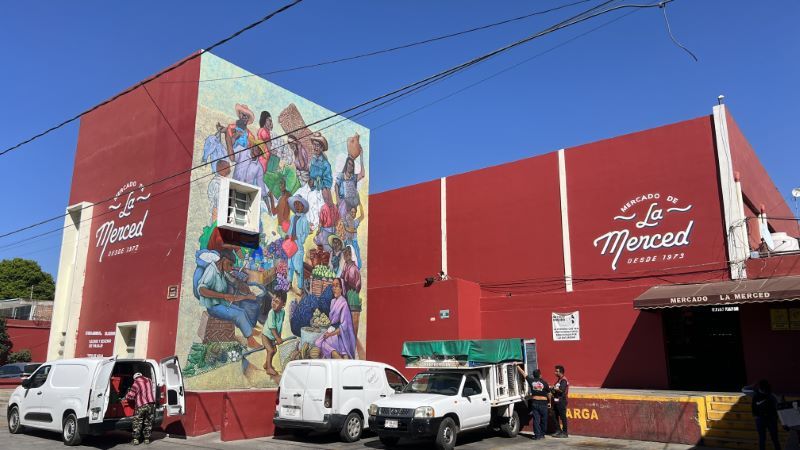
There are other advantages to using the cash pick-up method in Mexico. All you need is your passport or resident card and your password. You can pick up cash almost anywhere, from BanCoppel to OXXO to Farmacia Guadalajara to a local Telegraph/Telegram office to Mexican banks.
You only pay a fee for the service you choose to use, like MoneyGram, Western Union, etc. It’s best to check the fee and exchange rate at several services before sending money to your bank account or picking up money at your requested location.
For interesting ways to avoid paying fees when transferring money to Mexico, click here.
Problems with Lost or Stolen Credit/Debit Cards
Lost or stolen credit/debit cards are not easily replaced for retirees living in Mexico. When I lost my debit card, my regional US bank would not send me a replacement card to Mexico. They would only send the card to your confirmed address on your account.
After that, you need to ask a relative or someone you trust to send the replacement card to you.
Using Your US Brokerage or Retirement Account
Many of us, including myself, have brokerage accounts with a 401(K), an IRA, or a money market account to help with our retirement. As people begin to retire at younger ages, you may not yet be eligible for your company pension or Social Security pension.
Therefore, many retirees supplement their living expenses with their personal retirement accounts. Retirees under the age of 60 who applied for residency in Mexico used these same accounts to prove their financial solvency to the Mexican government.
There are a few key points about brokerage accounts that retirees in Mexico should know. First, you won’t pay Mexican taxes on the money you live on from your 401(K), IRA, or money market account. You already pay taxes on these withdrawals in the United States.
Second, not all brokerage accounts are the same. For instance, Fidelity told me that I could use my debit card from my money market account at ATMs in Mexico with no fees. I was also told that any fees paid to the Mexican bank would be reimbursed.
Even though I had spoken with Fidelity over the phone several times about where I live, each time I used my debit card from my money market account at a store or ATM, it was declined.
I know numerous retirees in Mexico who have had excellent experiences with Charles Schwab. The retirees in Mexico who use their Charles Schwab debit card are fully reimbursed at the end of each month for any type of transaction fee at ATMs.
Another benefit retirees report about Charles Schwab is that the exchange rate is directly tied to the rate posted by the Secretary of the Treasury in the United States. In most cases, this saves them up to three percent of the currency exchange rate that US banks generally charge for withdrawals in a foreign country.
Is Coppel a Real Bank?
Any retiree in Mexico has stepped into or walked by a Coppel store. It’s the largest private department store in Mexico. They also offer various accounts, including credit lines, bank accounts, and other consumer financial services, through BanCoppel.
I have an account with BanCoppel. It’s a formal bank account, and I have a debit card. I mainly keep this account as a backup plan. No matter where you travel in Mexico, you can find a Coppel store.
I can transfer money to my account and access funds with a debit card, just like with any other bank. I only use it when necessary or when I have extra emergency money. The account mainly serves as a backup for personal needs, such as appliances or other essentials, when I need them.
Like larger banking institutions in Mexico, BanCoppel relies heavily on biometrics for withdrawing money from your account. You can use your debit card at one of their ATMs for free, but often you’re limited to how much money you can withdraw.
Tax Implications
Of course, there are tax implications when a person has a savings account in a Mexican bank that earns interest. As a United States citizen, I have to deal with the IRS every year for earning interest on a Mexican savings account. As a resident in Mexico, I also have to deal with the Tax Administration Service of Mexico, known as SAT. Every year, I file taxes in both Mexico and the United States.
United States taxes are due on April 15th, and Mexico’s taxes are due on April 30th of each year. When I file my United States taxes, I fill out IRS Form 1116, the Foreign Tax Credit Form, to claim the taxes I pay in Mexico on the earned income I receive from my savings account. Since the two countries share tax information from financial institutions, it doesn’t matter which country I file my taxes in first.
Thankfully, the United States-Mexico Tax Treaty protects me from paying taxes twice. The treaty is designed to eliminate double taxation on taxable income in both countries. Therefore, since I am paying taxes in Mexico on income earned from anywhere in the world,
Taxes are always complicated for expats, and it’s best to speak with a professional about your own situation.
For a general overview of income tax for expats in Mexico, click here.
Helpful Finance Hacks for Retirees in Mexico
- Language barriers and a lack of banking options exist in rural areas and small towns in Mexico.
- Large urban areas with expats, retirees, and tourists rely more on debit card purchases. Rural areas and small towns are more cash-dependent, and you have less ability to use your debit card for daily needs.
- It’s best to have several banking options, including a Mexican bank and a US bank.
- Be familiar with online money transfer services like Western Union, Wise, MoneyGram, or XOOM.
- Use a cash pick-up option instead of using an ATM.
- When going to the bank, ATM, or picking up cash, vary the time of day you go. Patterns are noticed by untrustworthy people everywhere.
Now On to You
Well, you have plenty to think about now regarding what to do with your finances in Mexico. Everyone’s lifestyle is different, and everyone’s retirement pension is different.
You’ll find that choosing the right banking options, whether in Mexico or the United States, is important. You’ll also find accessing your money is easier than you might have thought.
Now it’s time to improve your Spanish, think about your retirement, and enjoy life as a retiree in Mexico.

